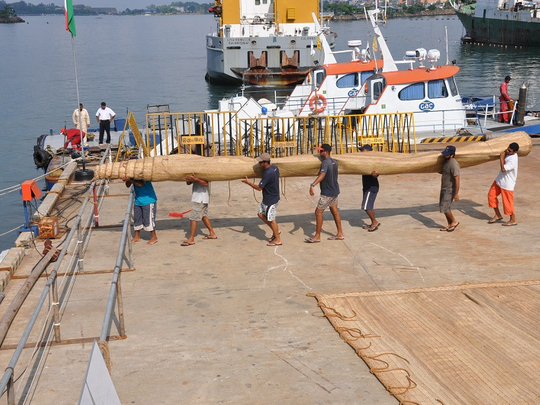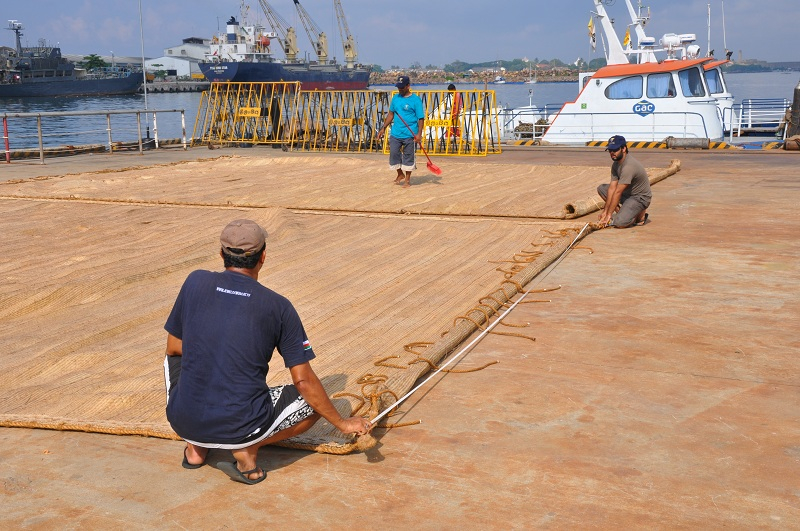
Muscat: A bad wind-squall has damaged the masts of the Jewel of Muscat on its way from Cochin in India to Galle in Sri Lanka.
‘Jewel of Muscat’ – a replica a of a ninth century merchant sailing vessel (dhow) – is on a 3000-mile voyage to Singapore from Oman. It is a model of the wreck of a timber-and- coconut rope dhow, salvaged in 2004 in Indonesia's Belitung Straits.
The discovery of the wreck excited maritime scholars, who viewed it as solid proof of a maritime silk route from West Asia to China.
The salvaged boat had a cargo of 60,000 ceramic plates and pots from the Tang Dynasty, which are currently kept in Singapore.
The replica dhow with the discoveries of Tang Dynasty would be kept in a museum in Singapore The sailboat, a gift from Sultan Qaboos to Singapore, experienced a variety of conditions from the Indian shores to the Galle in Sri Lanka but one strong gush of wind damaged its mast as well as sails, according to a report reaching here from Galle.
“Fortunately the skill of the crew on board was enough to prevent any real danger as they made they made repairs for the remainder of the leg,” said a spokesperson for the voyage.
Once the Jewel of Muscat arrived in Sri Lanka, the crew’s priority was to source new masts for the onward journey ending in Singapore.
After a long search north of Colombo they finally succeeded in finding two teak trees of the appropriate size to be used for the new masts, says a statement mailed to Gulf News from Galle.
A team of skilled craftsmen is working on the new masts that will be shaped and installed by the end of next week. Once the new masts have been stepped, and the crew has done some sea tests on them, Captain Saleh Al Jabri will confirm their departure from Galle on 15th May.
As the Jewel of Muscat has no engine on board she depends on the wind to propel her, and to do so she must have sails to harness the wind. Whilst the process of selecting the correct trees, felling them and preparing was underway, the rest of the crew worked on new sails.
The new sails have been made completely from palm leaves and will replace the canvas sails used so far in the journey. The new sails maintain the authenticity of the Jewel of Muscat and reflect the methods that would have been used in the 9th Century.
In the interest of historical research, the crewmembers will now use these woven sails for the remainder of the voyage to test their strength.
During her stay in Sri Lanka, the Jewel of Muscat has received a warm and enthusiastic reception from the people and despite occasional heavy rain, the crew has received more than 4,000 visitors to the ship.
The crew will continue with the general maintenance of the ship for the next few days to prepare the ship for a long and difficult voyage to Penang, Malaysia where she is expected to arrive on June 5. As with all the other legs, this arrival date is dependent on the strength and direction of the wind.
captions: Crew members carry the heavy sails to the Jewel of Muscat in Galle in Sri Lanka
Said Al Tarshi and Ayaz Al Zadjali measure the new sails in Galle, Sri Lanka













